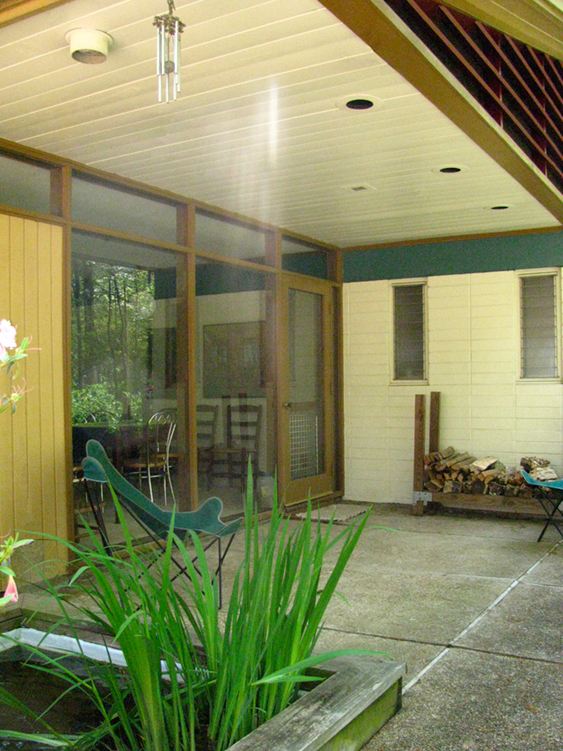State Commission to Fund Knoxville Historic Resource Inventory
Efforts to preserve Knoxville’s cultural heritage just got a boost from the State’s historians.
MPC was awarded a grant from the Tennessee Historical Commission to compile an inventory of local historic properties, a project that will survey and evaluate our history of growth and the architecture that resulted from it.
THC funding, totaling $21,000, will help MPC assemble a Historic Resource Inventory (HRI). The inventory is a thorough survey of Knoxville’s historic resources, including descriptions, maps, and photos, evaluating their significance based on local and federal criteria. Surveyed properties are examined for eligibility for listing on the National Register of Historic Places or designation as a city historic landmark.
The City of Knoxville is supporting the HRI effort with $14,000 in matching funds.

Photo: Back yard of the Hotpoint Living-Conditioned House in West Hills
"We’re fortunate to have been awarded these grants. We can’t do a good job of preserving historic resources if we don’t have a good record of where they are and what their status is,” said Kaye Graybeal, MPC’s Historic Preservation Planner.
When complete, the HRI will be a planning tool that helps balance preservation goals with new development and other community amenities and improvements. With it, MPC can guide city officials and developers in making better decisions on projects that may affect historic buildings, properties, and neighborhoods. The HRI also helps MPC advance preservation objectives included in sector plans and neighborhood plans.
MPC is no stranger to HRI work. Back in 1982, the agency began its first comprehensive survey of local historic sites, culminating in the 1988 report, The Future of Our Past. A revised edition of that inventory was completed in 1993. Because it has been more than 20 years since this type of effort was last undertaken, more recent structures have become worthy of inclusion due to their increased age. Also, historic properties that have been heavily altered, neglected, or demolished need to be recognized.
This round of HRI work has three goals:
- Update the inventory as a basis for nominating 20th-century suburb districts to the National Register of Historic Places
- Digitize spatial and historic data and images to be added to the Knoxville Geographic Information System (KGIS) and Tennessee Historical Commission websites
- Identify historic resources constructed between 1936 and 1965, including “Mid-century Modern” architectural resources, and assess their eligibility for the National Register of Historic Places.
Various neighborhood associations and property owners have recently asked about expanding or establishing historic district zoning overlay in their communities. An updated HRI is needed to determine appropriate boundaries for potential districts. Also, City of Knoxville preservation strategies require accurate information about a property’s historic status in order to fund grants for preservation projects.

Photo: Rear patio of the Hotpoint Living-Conditioned House in West Hills
“These are just a couple of the practical benefits of maintaining an updated HRI,” notes Graybeal. “But just as important is the role the HRI plays to heighten awareness and appreciation of the cultural heritage displayed in the variety of architectural forms in our own back yard.”

